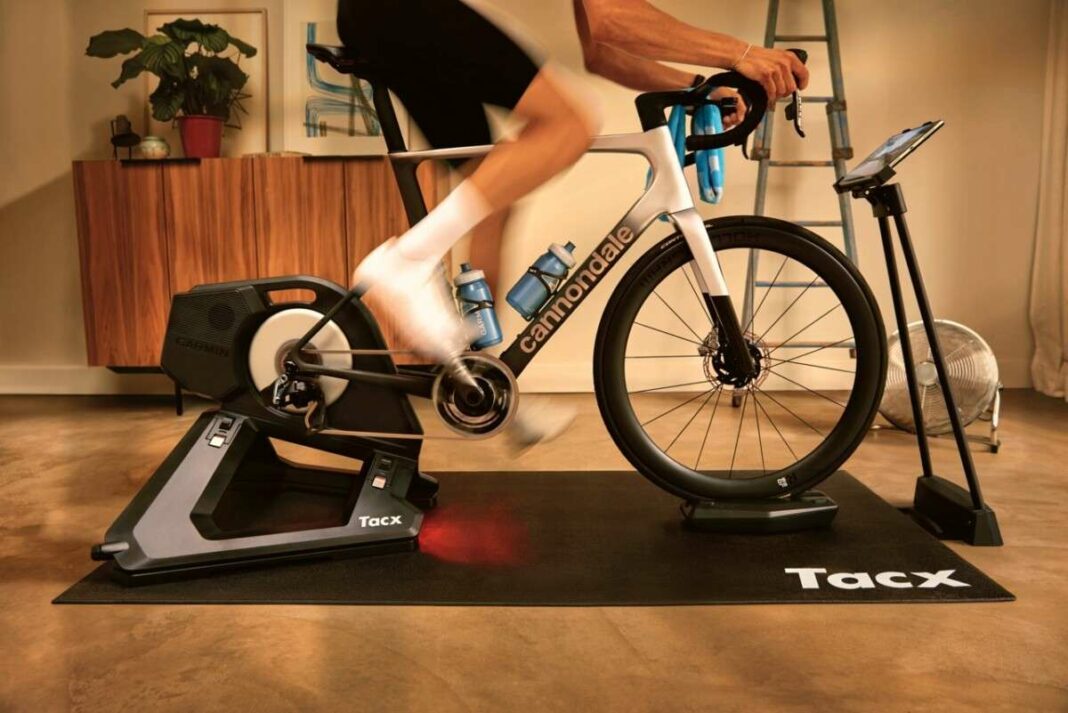Garmin’s Tacx Neo 3M is a cutting-edge home trainer designed for indoor cycling during winter. With a sleek, futuristic design and impressive stability, it features innovative “Motion Plates” for enhanced performance. Setup is straightforward, supporting various cassette types and seamless connectivity with apps like Zwift. After two months of testing, users find it quiet and effective, simulating significant gradients while providing a realistic cycling experience. The trainer’s functionality and ease of use justify its premium price.
Winter Riding Made Easy with the Garmin Tacx Neo 3M
As winter settles in, the cold weather can often put a damper on outdoor cycling adventures. Thankfully, home trainers have evolved significantly over the years, becoming smarter, quieter, and capable of replicating various terrains and steep inclines.
This winter, Garmin introduces a new connected home trainer designed for comfortable indoor cycling. The Tacx Neo 3M, which replaces the Tacx Neo 2T, promises an engaging experience. But does it justify its price tag of €1,999?
For this review, we received the home trainer directly from Garmin.
Striking Design of the Garmin Tacx Neo 3M
The Tacx Neo 3M boasts a futuristic design reminiscent of a spacecraft, featuring a sleek matte black finish accented by a gray flywheel. Weighing in at 23.6 kg, it may be challenging to lift, but Garmin has cleverly incorporated a handle to assist with transport.
This weight contributes to its excellent stability. Even when pushing my limits, the trainer remains steadfast—though perhaps my power output is to blame for its immobility. The additional 2.1 kg compared to the Tacx Neo 2T can be attributed to Garmin’s innovative “Motion Plates,” which are designed to absorb forward and backward movements. While there may be a slight tendency to lean forward on smoother surfaces, overall stability is impressive.
The wide base of the Tacx Neo 3M does add some bulk, but it folds up conveniently once you master the technique, making it easier to store. However, be prepared for its dimensions (695 x 355 mm) to require a spacious closet.
Garmin also includes a front wheel support to keep your bike upright during use. Without it, the bike may lean forward, causing constant adjustments to maintain your position.
Quick and Easy Setup for the Garmin Tacx Neo 3M
Although the Tacx Neo 3M I tested wasn’t brand new, I found the setup process to be straightforward. No special tools are required; simply unfold the feet by hand until you hear a lock click. Activating the Motion Plates is as easy as turning a knob located at the back of the trainer.
Since the previous user had a bike with a quick-release system, I needed to swap out spacers for my disc brake and thru-axle setup. This was manageable, but be cautious not to overtighten, as you might require a wrench to loosen it.
The Tacx Neo 3M comes equipped with an 11-speed Shimano/SRAM cassette. If you intend to use a different cassette, be aware that an additional body must be purchased for €79, as swapping the existing mount is not an option.
Seamless Software Compatibility
By default, the Tacx Neo 3M supports ANT+ connectivity, allowing you to link it to your GPS computer for real-time data on power, speed, and cadence. Additionally, it features Bluetooth connectivity for smartphone integration.
For instance, to connect the trainer to a computer running Zwift, I utilized the Zwift Companion app on my smartphone, which communicated via Wi-Fi. Alternatively, you can connect directly through Bluetooth. If your computer lacks Bluetooth capability, a Garmin ANT+ USB antenna is available for €49.99.
A Wi-Fi connection module is also offered as an optional upgrade, though it wasn’t available during my testing.
The Garmin Tacx Training app enhances the experience by providing training summaries and the option to ride famous routes in the Alps or Pyrenees. However, while entertaining for a few sessions, it doesn’t quite match the immersive experience offered by Zwift, which is preferred by many cyclists for virtual riding.
The Tacx Training app includes a variety of training sessions with different lengths and intensities, and it automatically syncs with your saved sessions on Garmin Connect, allowing you to carry your road training indoors.
Additionally, it is compatible with other platforms like TrainerRoad, but I primarily used it with Zwift.
Final Thoughts on the Garmin Tacx Neo 3M
After two months of testing, I’ve accumulated numerous rides on the Tacx Neo 3M. I can confidently say that the bike installation process is remarkably simple, taking about 30 seconds—longer only if you forget to prepare your bike ahead of time.
Connecting to Zwift is quick and easy, especially if your phone is paired via Bluetooth and on the same Wi-Fi network as your computer.
Once you start riding on Zwift, the quiet operation of the Tacx Neo 3M is impressive. Capable of handling up to 2,200 watts and simulating gradients of up to 25%, the trainer performs exceptionally well. You won’t need to drown out the noise with music, and it only becomes louder when simulating rough surfaces like gravel or cobblestones.
During group rides or races on Zwift, the drafting effect feels realistic, demanding extra effort to keep pace if you drop back from the pack. The climbs require shifting gears to maintain cadence, while the descents allow you to ease off on power, creating a well-rounded indoor cycling experience.
